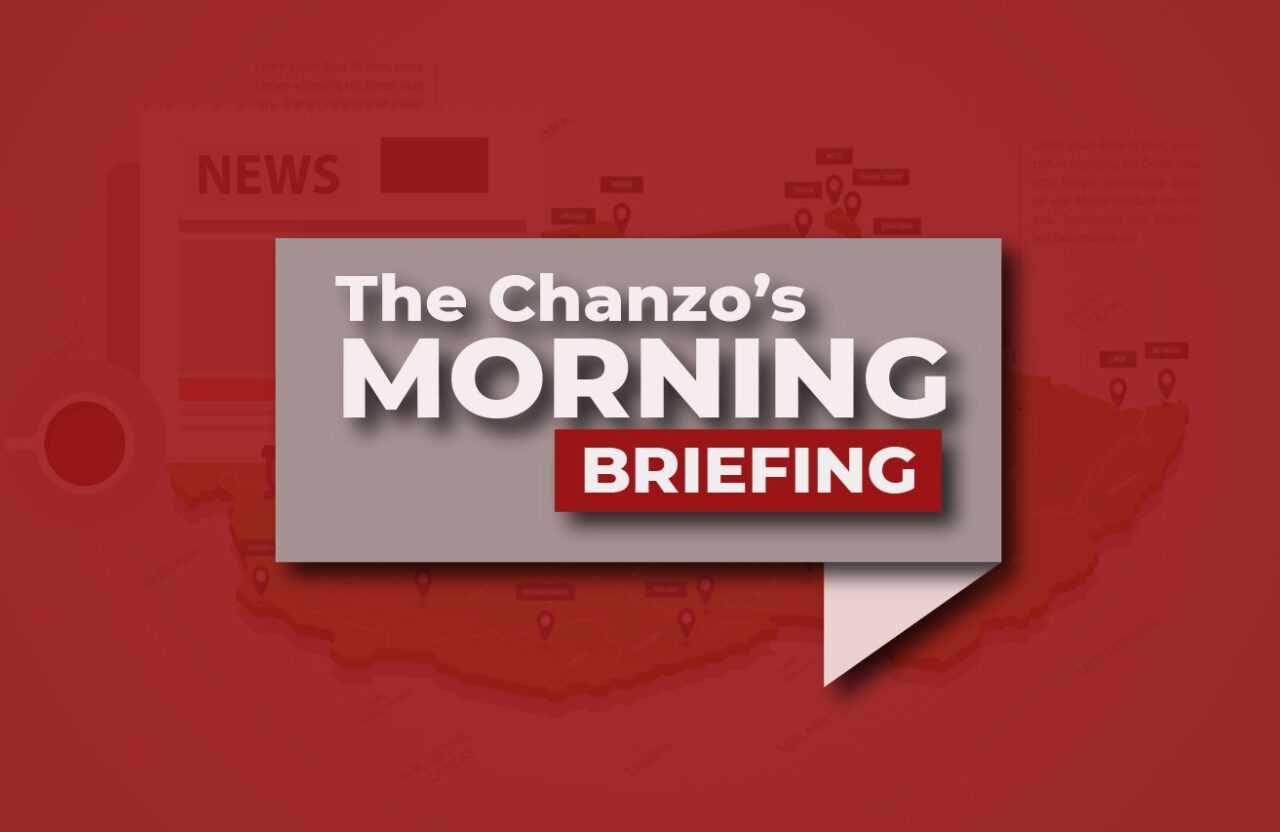Between September 12 and November 5, 2024, The Chanzo investigated U.S. dollar availability in Tanzania by visiting banks and currency exchange outlets across Dar es Salaam. During our initial survey from September 12 to 14,2024, a dollar shortage was evident, with many locations struggling to provide even small sums.
However, when we revisited the same banks and bureaux de change between October 26 and November 5, a significant improvement was observed, with many outlets able to sell sizable amounts for retail purchases.
“I haven’t seen even $100 in over a week, a currency exchange operator in Mikocheni, Dar es Salaam, told The Chanzo back in September 2024. “We only have Euros at the moment,” he added. Other exchanges in Mikocheni also reported a lack of dollars, with no clear timeline for when they might restock.
In some areas dollars were available but at a limited amount per person, only USD 100. “You can get $100, but you’ll have to come back later,” a currency operator in Msasani told our reporter. Of the 15 currency exchanges The Chanzo visited in Dar es Salaam, only three were able to provide only $100.
When asked why U.S. dollars were scarce, a visibly frustrated exchange operator explained, “Customers don’t bring dollars here; they’re selling them in the streets at inflated rates.”
Further inquiries revealed a surprising insight: while dollars were still available informally, they were traded at rates very close to official market rates, suggesting a fading black market or a market anomaly.
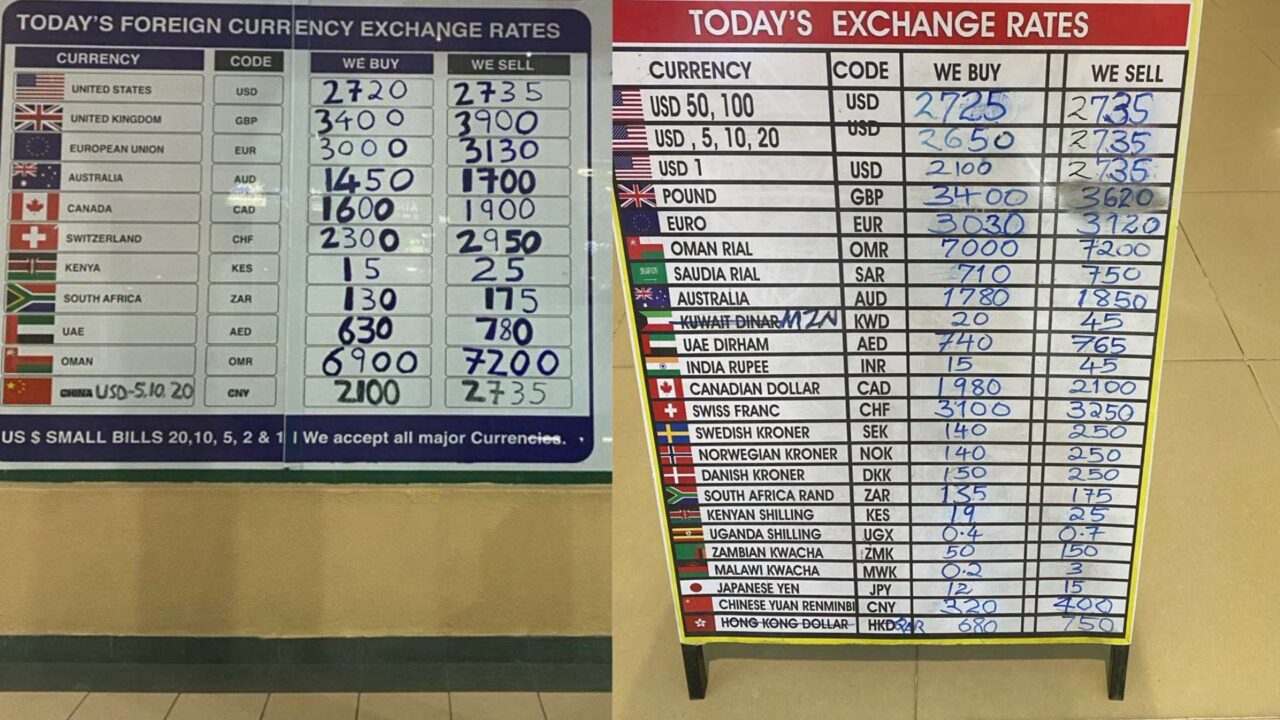
The Chanzo also visited several banks in Dar es Salaam in September 2024, where supply constraints persisted, though it was evident the situation in the banks had become much better compared to last year.
“Each branch is rationed about $1,000 daily for walk-in customers,” an official from one of Tanzania’s top banks explained.
In another bank, a customer attempting to obtain $150 for a visa application expressed frustration to our reporter as he was waiting to confirm dollar availability, “I was directed to this branch, but now I don’t know what’s going on.” After a 15-minute wait, a bank official confirmed his request by printing an email of approval and he was able to receive the amount at the counter.
The Chanzo repeated similar research between October 26 and November 5, 2024. There was a notable improvement in the dollar, to the extent it seems the situation has returned to normal.
At a previously visited exchange, where an operator complained in September 2024, that he had not seen dollars for over a week, he was ready to offer our reporter over 1,000, “Bring a printed travel document or other supporting document, and you’ll get them.”
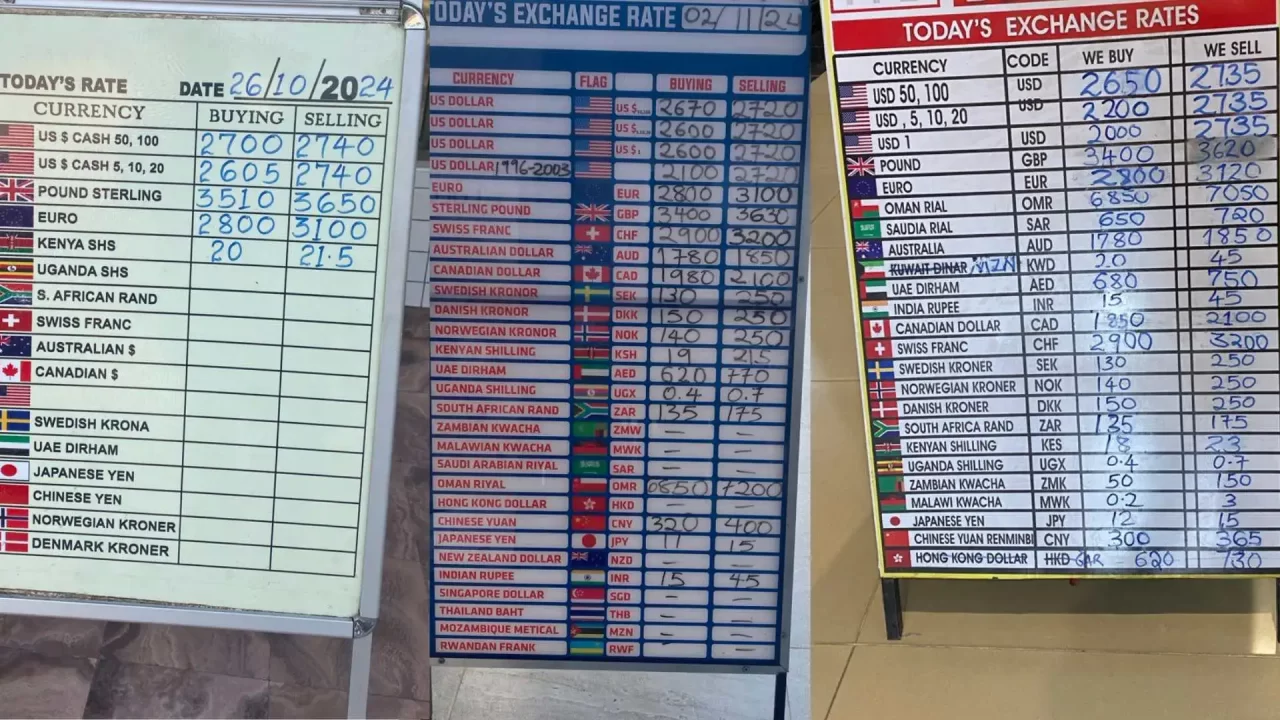
In some, Bureaux de Change areas was even advertising the availability of sums exceeding $5,000. All banks that The Chanzo visited in September were now ready to sell $1,000 or more to account holders during our second visit in November 2024, reflecting a marked improvement. The mighty Benjamins are no longer rare in Tanzania.
The roots of the dollar shortage
While most emerging market economies have been grappling with dollar shortages since late 2022, Tanzania felt the strain more acutely by early 2023. In May 2023, the government officially acknowledged the issue, attributing the shortage largely to a current account deficit that reached $5.4 billion in 2022.
Factors contributing to the deficit included the lingering effects of COVID-19, rising import costs due to the Russia-Ukraine conflict, and substantial dollar requirements for national projects like the Standard Gauge Railway (SGR) and the Mwalimu Nyerere Hydropower Project.
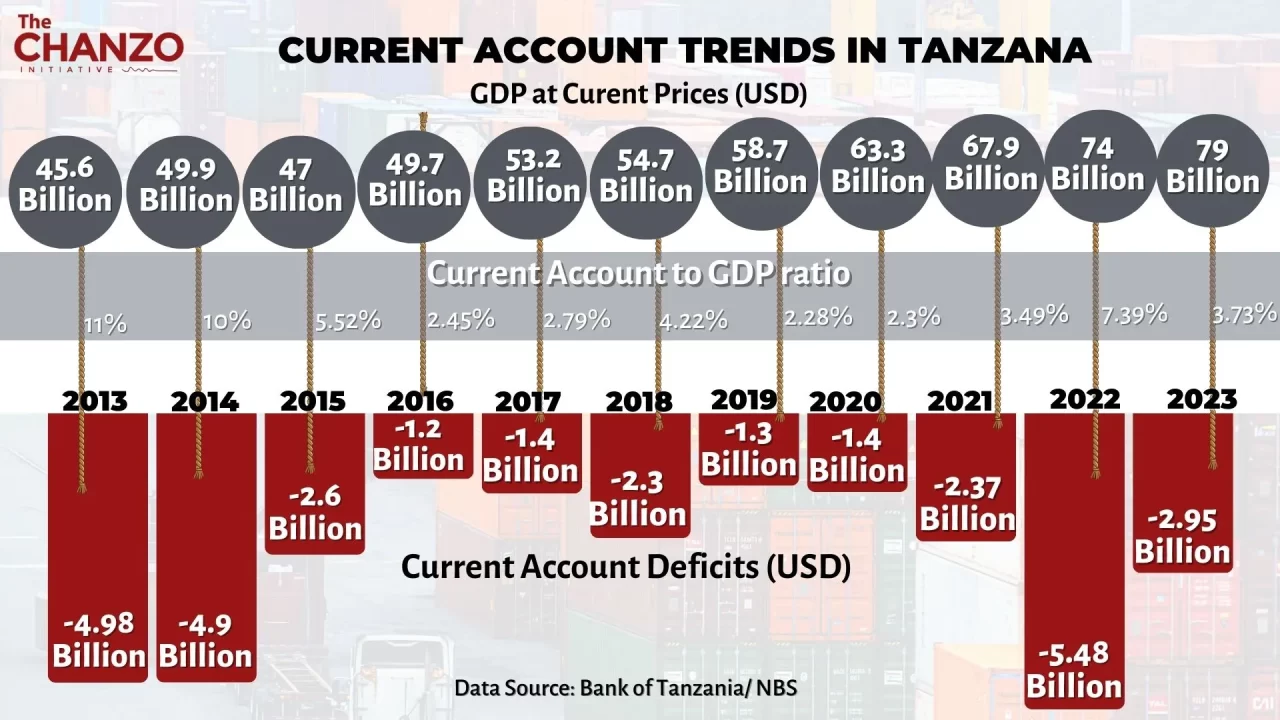
Simultaneously, the U.S. Federal Reserve’s rapid interest rate hikes, with experts citing it as the fastest in recent history—created an environment that attracted dollars back to the U.S., compounding Tanzania and other African countries’ liquidity challenges.
One of the notable signs of an unprecedented dollar shortage is the drying out of activities in the Interbank foreign exchange market trading, the exchange market between Tanzanian banks.
In 2021, there were transactions valuing USD 818 Million in the foreign interbank market, with 94 percent of the circulation coming from Commercial Banks, the situation dwindled in later years, prompting the Central Bank’s frequent intervention.
By 2023, the Interbank foreign exchange was heavily reliant on intervention from the Bank of Tanzania (BoT). August, September, and October 2023 were particularly challenging, with no interbank currency trading and only central bank interventions. Over the year, BoT supplied around $506 million to stabilize the market.
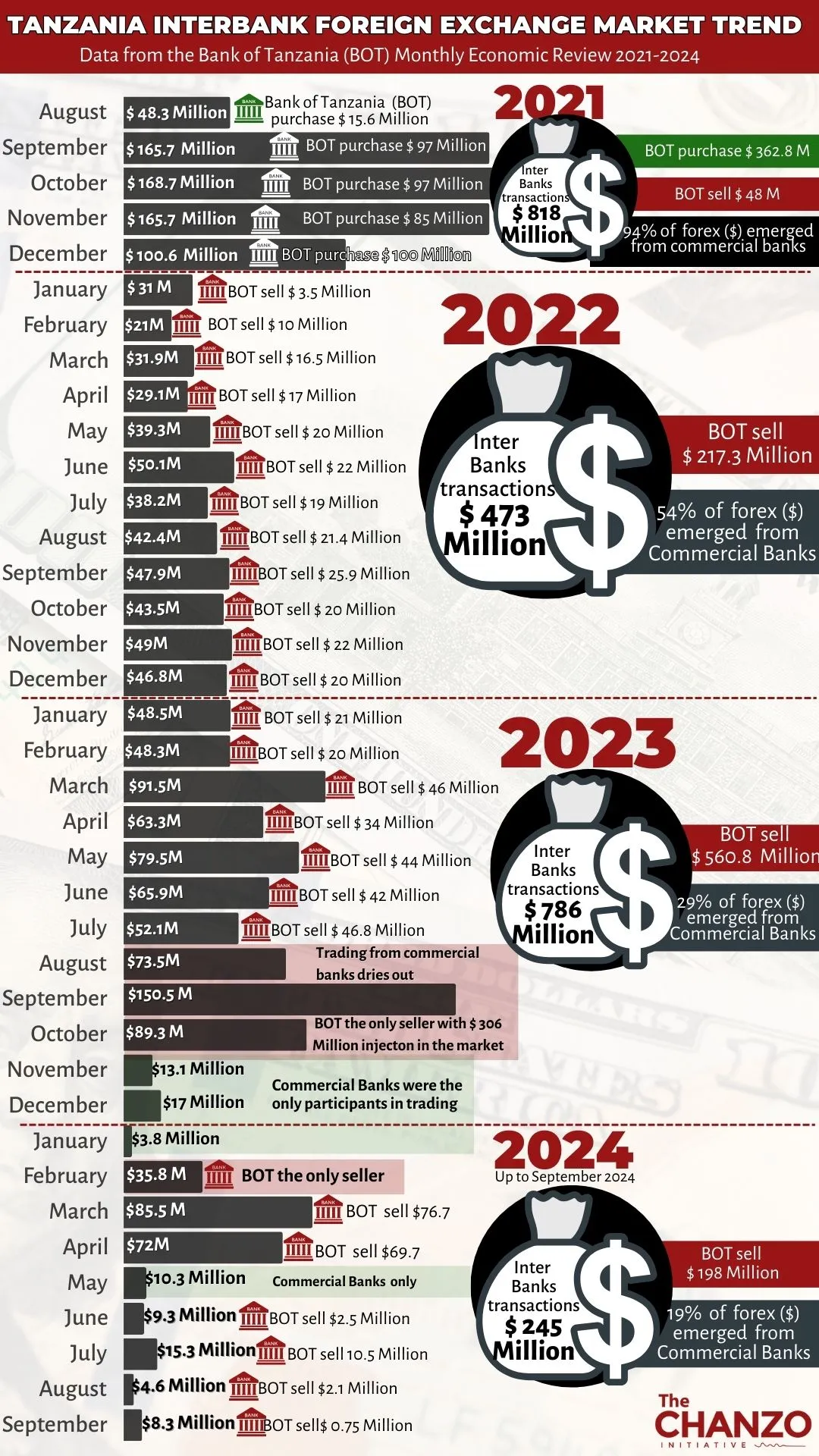
Moreover, banks saw a rise in dollar deposits, as many customers held onto their dollars instead of trading them. At the 21st Conference of Financial Institutions in March 2024, former university lecturer and banker Dr. Mouhsin Masoud explained this trend, saying, “In the bank, you can have a lot of dollars in customers’ accounts, but they’re not available for sale.”
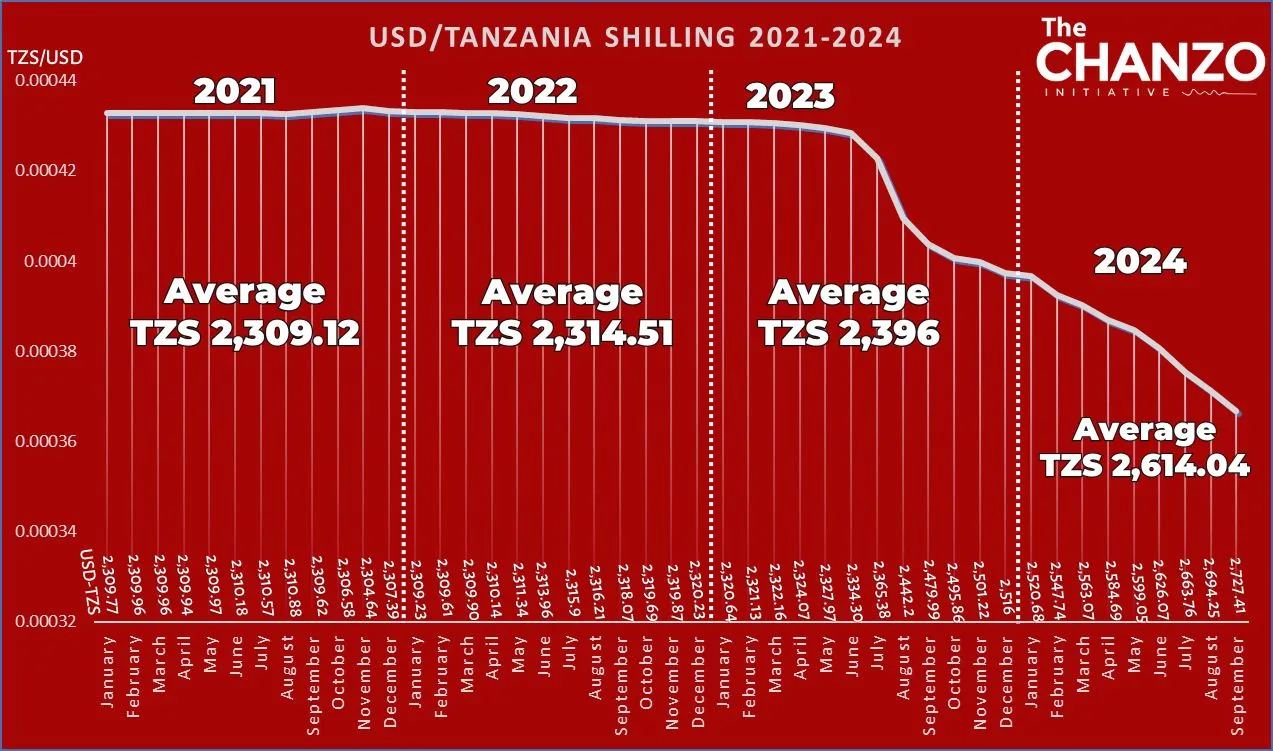
The BoT noted a similar trend, stating in its July 2024 Monetary Policy Statement, “Banks’ foreign currency deposits maintained an upward trend since January 2024, driven by high returns favoring holding and transacting in foreign currency.” This demand for foreign currency accelerated the depreciation of the Tanzanian shilling.
There was also a noted emergence of the black market of dollars, signaling the official rate was off- the rate that the market was willing to sell as this was explained by the Chairperson of Tanzania Truck Owners Association, Elias Lukumay on February 28, 2024, during national tax forum.
“On the issue of the dollar, the Government has put a cap, no Bank will change above the rate of 2500 or 2550 but in the street, dollars are there, because they are exchanged at 2700 to 2800. Dollars are not staying in Banks because the rate is lower than the streets,” explained Lukumay.
Policy Interventions, IMF and the Future
Speaking to The Chanzo about the current situation in the availability of the dollars in the market the Executive Director of the Tanzania Association of Oil Marketing Companies (TAOMAC) Raphael Mgaya, highlighted a notable improvement in the market.
“The situation has improved, it’s not like the way it used to be, but we are not there yet,” Mgaya told our reporter. When asked about the challenge seen, Mgaya explained that there are still some instances where they still have to use Euros in place of dollars.
The Chanzo also speaks to some traders in Kariakoo, where they explain how the market has adopted, especially traders who order goods from China.
“We have local banks that you can deposit shillings and you get Yuan while in China,” the trader who imports beauty items from China explained. However, he shared that the only issue is to get the Yuan, the Tsh currency is first calculated in USD and then exchanged again to Yuan causing a double loss in the exchange rate.
In light of the foreign exchange pressure, the International Monetary Fund (IMF) through its recovery program which Tanzania is currently engaging in, required Tanzania to reduce central bank intervention in the market and allow for Banks and bureau de changes to use market rate.
“If left unaddressed, re-emerging pressures in the foreign exchange market could undermine Tanzania’s hard-earned macro-financial stability. The BoT should encourage banks and bureau de changes to trade at market clearing exchange rates, and conduct foreign exchange interventions in accordance with the new policy while maintaining adequate foreign exchange reserves,” the report reads.
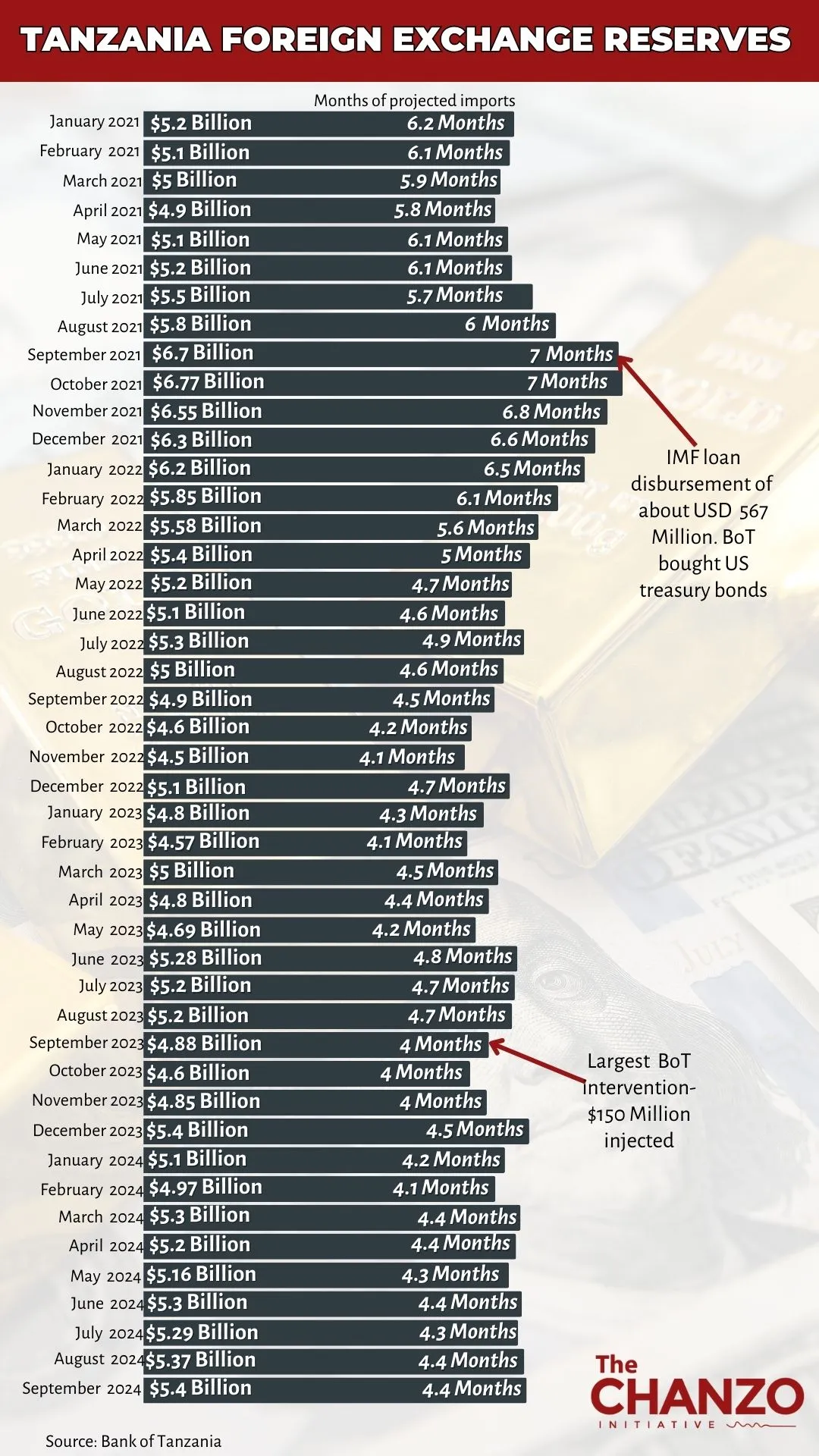
Central Bank intervention in Tanzania’s foreign exchange market has recently declined, with August and September 2024 marking the lowest liquidity supply from the Bank of Tanzania (BoT) in recent memory. Meanwhile, commercial banks’ trading activities have increased, reflecting a gradual stabilization of the market.
In July 2024, Tanzania introduced several policy changes aimed at reducing dollar demand and supporting the local currency. One notable measure is the prohibition of foreign currency transactions for domestic trade, designed to limit the internal need for U.S. dollars. Additionally, the government has launched a gold purchase program to diversify its foreign reserves. To date, Tanzania has acquired 976.51 kilograms of gold toward a target of six metric tonnes by June 2025. This approach reduces the need to source dollars for the reserve, as the gold is locally sourced and purchased with Tanzanian shillings.
The nation’s balance of payments has further benefited from favorable harvests and rising global commodity prices, particularly gold. Cashew exports alone generated over TZS 743 billion in October, while the tourism industry continues to thrive, attracting 1.8 million visitors in 2023 and another 1.56 million by August 2024.
Additionally, the U.S. Federal Reserve has initiated a series of interest rate cuts, which are expected to ease global dollar liquidity. Despite the recent shift in U.S. leadership, it is unlikely the Federal Reserve will revert to rate hikes, especially given the importance of economic stability highlighted in the U.S. 2024 election.
Our outlook on dollar availability in Tanzania is optimistic, with signs of continued improvement. However, we anticipate that the dollar will maintain a relatively high exchange rate to the Tanzania shilling due to expectations of robust economic activity in the U.S. and the rate that will be largely set by market forces without heavy BoT intervention.



